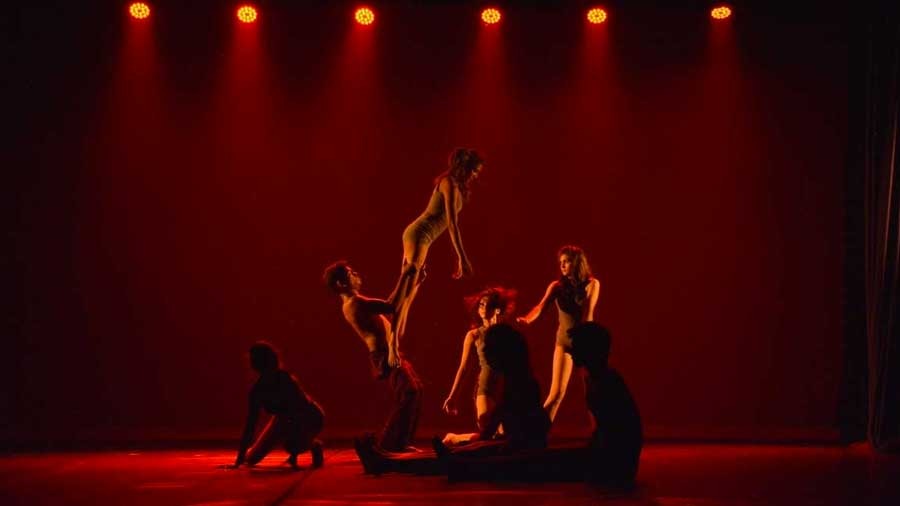Dance is poetry in motion. For Kylie Walters, dance is also the expression of truth. “When you’re true, the audience picks up on it. And you can only be true when you achieve a synthesis between choreography, performance and setting,” believes Kylie.
Born and brought up in Adelaide, South Australia’s coastal capital, Kylie moved to Melbourne to complete her bachelor’s degree at the Victorian College of Arts when she was 16. Thereafter, her multidisciplinary talents at the intersection of dance, music and theatre took her to multiple countries, from the United Kingdom to Switzerland, from Belgium to France, where she is currently the director of the dance department at Lyon’s Conservatoire National Supérieur de Musique et de Danse. Swapping the snows of Lyon for prickly summer heat, Kylie was in Kolkata in early April to mentor local dancers participating at this year’s Prakriti Excellence in Contemporary Dance Awards (PECDA) in Bengaluru.
My Kolkata caught up with Kylie for an early morning chat at The Park, during which she shared her experience of associating with the PECDA performers, articulated her artistic vision, picked out the highlights from her stay in Kolkata and more.
I wasn’t expecting so much stylistic variety among Kolkata’s dancers
“Something special is going on in this city which is quite exciting,” said Kylie about the contemporary dance scene in Kolkata now. This is reflected in the record number of representatives (five, including solo and group performers) that Kolkata is sending to PECDA in 2022, a historic high for the city. “I wasn’t expecting so much stylistic variety in the dance propositions across the groups, which ranged from neoclassical foundations to contemporary dance as well as dance theatre,” said Kylie, who spent three hours with each of the participating teams at Park Street’s Alliance Française du Bengale.
What impressed her most about the dancers? “I think the speed with which they were accepting feedback and processing suggestions was incredible. There was a burning desire to show their work, which made for terrific energy in the studio. Also, their openness and willingness to learn was heartening to see. This is why we were able to use our three hours to the last drop.”
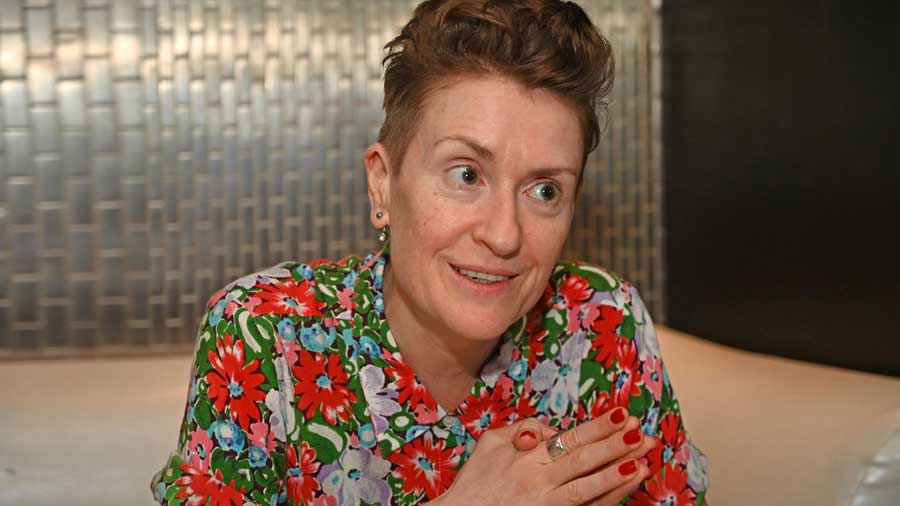
Kylie believes a dancer ought to invite the audience into a performance instead of explaining the performance to them Amit Datta
As someone who has been performing in front of artistically enlightened audiences for decades, Kylie saw her job as telling the performers “how to invite the audience into their work rather than explaining it to them”. Dance should not be didactic, according to Kylie. Instead, it should be a calibrated balancing act between meaning and expression, where every element is precise and every bit of extraneous movement or information is eliminated.
Nerves are a good thing; I’d be more worried if there were no nerves
Did Kylie also advise the performers on how to handle nerves, especially considering how many of them will be performing at PECDA in front of a live audience for the first time since the pandmeic broke out? “I told them to stick to their work rather than trying to project something on stage that they haven’t done in their rehearsals. At the same time, nerves are a good thing. It’s our body preparing us to be alert. I’d be more worried if there were no nerves,” chuckled Kylie.
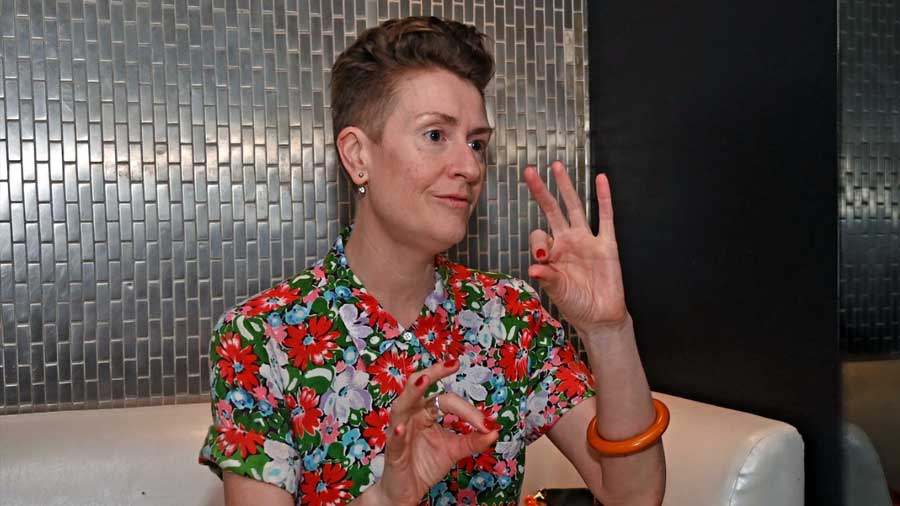
Kylie performed in the opening ceremony of PECDA back in 2014 Amit Datta
As she spoke, even when seated, Kylie’s energy was infectious, her body language communicating a story of its own with her hands, face and eyes moving rhythmically, as if choreographed by her consciousness.
“At PECDA, these performers will only have 10 minutes to show what they’ve got. So distilling their themes is crucial,” explained Kylie, who herself stole the show at PECDA’s opening ceremony back in 2014. “I have really fond memories from my time at PECDA and I hope that all the performers can do justice to their creations, many of which have endured a long gestation period due to the pandemic,” said Kylie.
You don’t want to saturate someone with your performance

The feedback loop between performer, proposition and public gaze is vital in dance, argues Kylie
For Kylie, a good dancer knows how not to overthink a concept and constantly stay in touch with the practical applications of it. Another essential quality is making active use of the feedback loop between performer, proposition and public gaze, something Kylie has been emphasising on during her sessions.
“You don’t want to saturate someone with your performance, unless that’s your specific aim. Most of the time, it’s about getting rid of certain portions that may have been initially relevant but no longer add value to what you’re doing. You may have grown close to those portions, but you should have the intelligence to know when something isn’t required anymore,” said Kylie, echoing William Faulkner’s adage of “killing your darlings” for writers.
PECDA performers from Kolkata are not the only ones fortunate enough to learn from Kylie. As part of her whirlwind mini-tour of India, Kylie is also interacting with teams from Mumbai and Bengaluru and conducted an online session with participants from Delhi. “It’s been a lovely experience to witness and interact with so many propositions. I’ve enjoyed working on both the artistic and pedagogical sides.”
Kolkata’s fluidity, freshness and food

Kylie on her visit to Shyambazar’s Calcutta Bungalow Amit Datta
Unlike 2014, Kylie will not attend this year’s PECDA, which starts on April 20. “I’ll have to be back in Lyon by then. I can only stay far away from my students for so long,” said Kylie, who sees traces of Lyon in Kolkata. “Maybe it’s something about both being river cities, but there’s an inherent fluidity in both places. There’s also so many coloured buildings in Kolkata, just like in Lyon, everything from pink to yellow to deep red.”
One of the many coloured buildings that grabbed Kylie’s attention in Kolkata was Shyambazar’s Calcutta Bungalow, which Kylie described as “being a splendid example of renovation and revamp with beautiful architectural patterns that are both creatively stimulating and logistically efficient”.
Kylie’s trip to Calcutta Bungalow was part of a stroll after dawn through Shyambazar, where she observed locals setting up stalls, exercising and going about their lives in the “sweet, soft way” that she has started to identify with life in Kolkata.

Kylie calls Park Street, seen here during Christmas 2021, ‘a street of life’ TT Archives
From the “amazing” Indian Museum to “the wonderful wooden staircases” at Alliance Française, Kylie loved exploring slices of Kolkata during her work breaks. As for Park Street itself, Kylie calls it a “street of life”, bustling with activity, people and food. Speaking of food, Kylie had a great time sampling Kolkata’s homemade rice, shingaras and chutneys, apart from her “favourite fresh fruits that began my days on the perfect note”.
Incorporating myths and their backstories, understories and overstories

After meeting her French partner in Switzerland, Kylie decided to settle down in her partner’s home city of Lyon Pinterest
“I’ve always had a longing to discover, which is why I love moving,” said Kylie, who describes her current base in Lyon — where she stays with her French partner — as the “dance capital of France, a fantastic place to bring up young dancers.”
Throughout her career, which has seen her work with some of the world’s most accomplished directors and choreographers — from Guillaume Bailliart to Davis Freeman, from Nicole Seiler (with whom she first came to India for a project) to Miranda Pennell — Kylie has been fascinated by how “myths or imagined realities influence our realities”. As her artistic outlook expanded and matured, she found subtler ways of incorporating mythical structures into her work in a way that recognises “backstories, understories and overstories”.
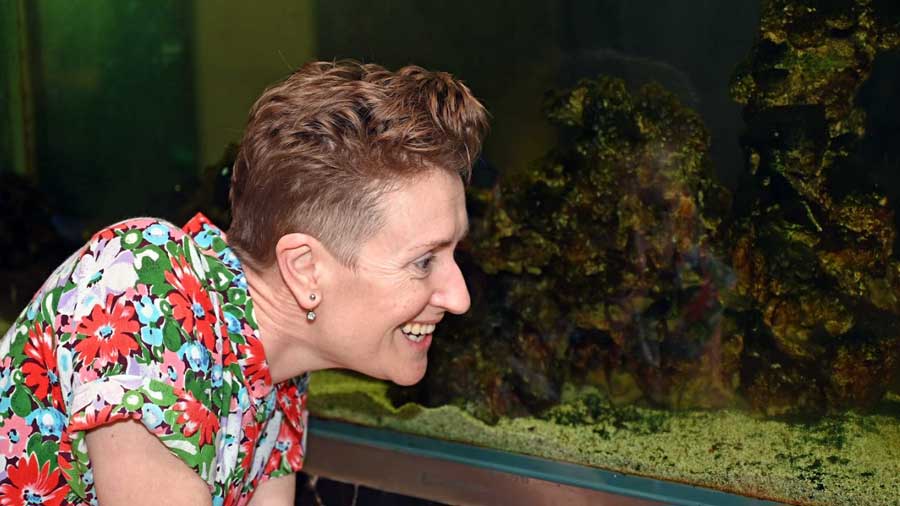
Citation and acknowledgement of sources can prevent cultural appropriation, feels Kylie Amit Datta
In doing so, how has Kylie navigated the minefield of cultural appropriation, an increasingly thorny issue for artists shuttling between countries and cultures? “For me, what separates cultural appropriation from cultural appreciation is the citation of sources. You need to reference those who have inspired or influenced you. It’s the same as writing an essay. The whole point of referencing is to bring people in, to have a dialogue,” said Kylie, admitting that certain cultural phenomena like yoga or ballet lend themselves more easily to appropriation, simply because “they can speak to a lot of different people in a lot of different forms”. The lesson, however, is to ensure that “when you are handling aspects of another culture, you do it from a position of respect, and not one of fear”.
The Russian invasion of Ukraine is no reason to stop reading Dostoevsky
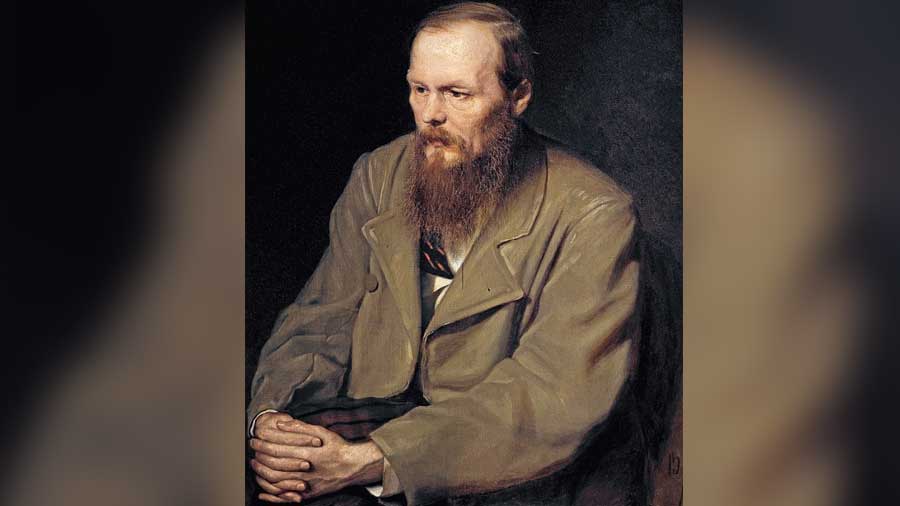
According to Kylie, Russian cultural icons like Fyodor Dostoevsky should not be cancelled because of Russia’s invasion of Ukraine TT Archives
For someone who has worked mostly in Europe, what does the most disturbing European event in a generation, the Russian invasion of Ukraine, signify for the artistic community? “I have both Russian and Ukrainian friends and it’s obviously an extremely difficult time for them,” said Kylie, who is baffled by the maniacal cancelling of Russian cultural figures across the world: “We’ve got to learn to separate the performers and their origins from the work itself. It makes no sense to stop reading Dostoevsky or quit listening to Tchaikovsky because of what’s going on in Ukraine right now.”

Kylie reminds us that not everyone has the privilege to make choices during conflicts Amit Datta
Acutely aware that for those hurled into the middle of of conflict by the perverse dance of destiny, the “choice to make a choice” is a rare privilege, Kylie would rather the cultural commentariat not jump to conclusions, but have the patience and sensitivity to understand the nuances of the situation arising out of the Russia-Ukraine war.
Admiration for the Williams sisters and love for marathons
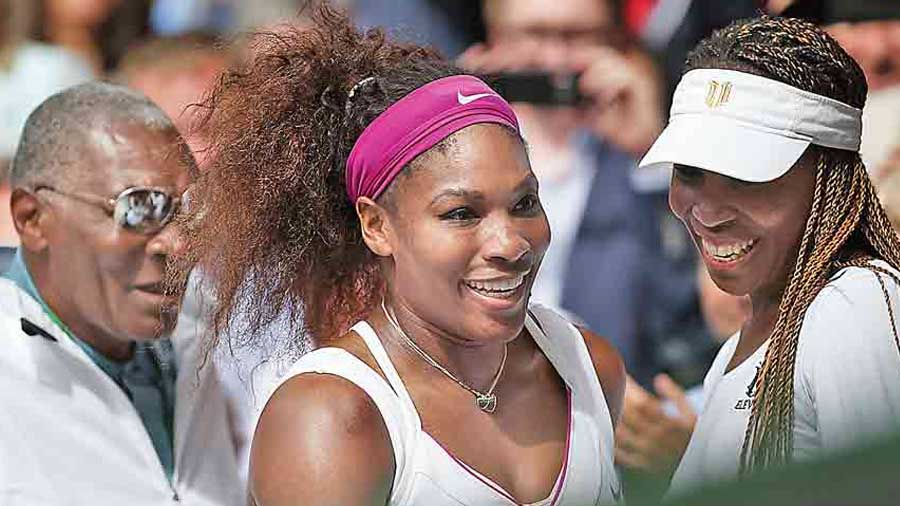
Kylie is a big tennis buff and has closely followed the careers of Serena and Venus Williams TT Archives
Segueing from something as moving as war is never easy, but Kylie was quick to diffuse the tension and start talking about her hobbies outside the world of performance. “I love song-writing and gardening. I’m also a big fan of tennis,” said Kylie, who has long admired the Williams sisters and has separate praise reserved for the “awesome” Ashleigh Bartey.
“I’m also an intense watcher of marathons,” added Kylie, just before the interview wrapped up. Of course she is, for just like in dance, economy and rhythm of movement are pivotal for marathon runners, too. “Pushing through the various levels of physical exhaustion for two to two and a half hours takes a lot of resilience,” explained Kylie, whose passion for both marathon and dance hark back to her cardinal belief in the supremacy of the body, the simple but powerful idea that “the body is key, it’s everything”.

